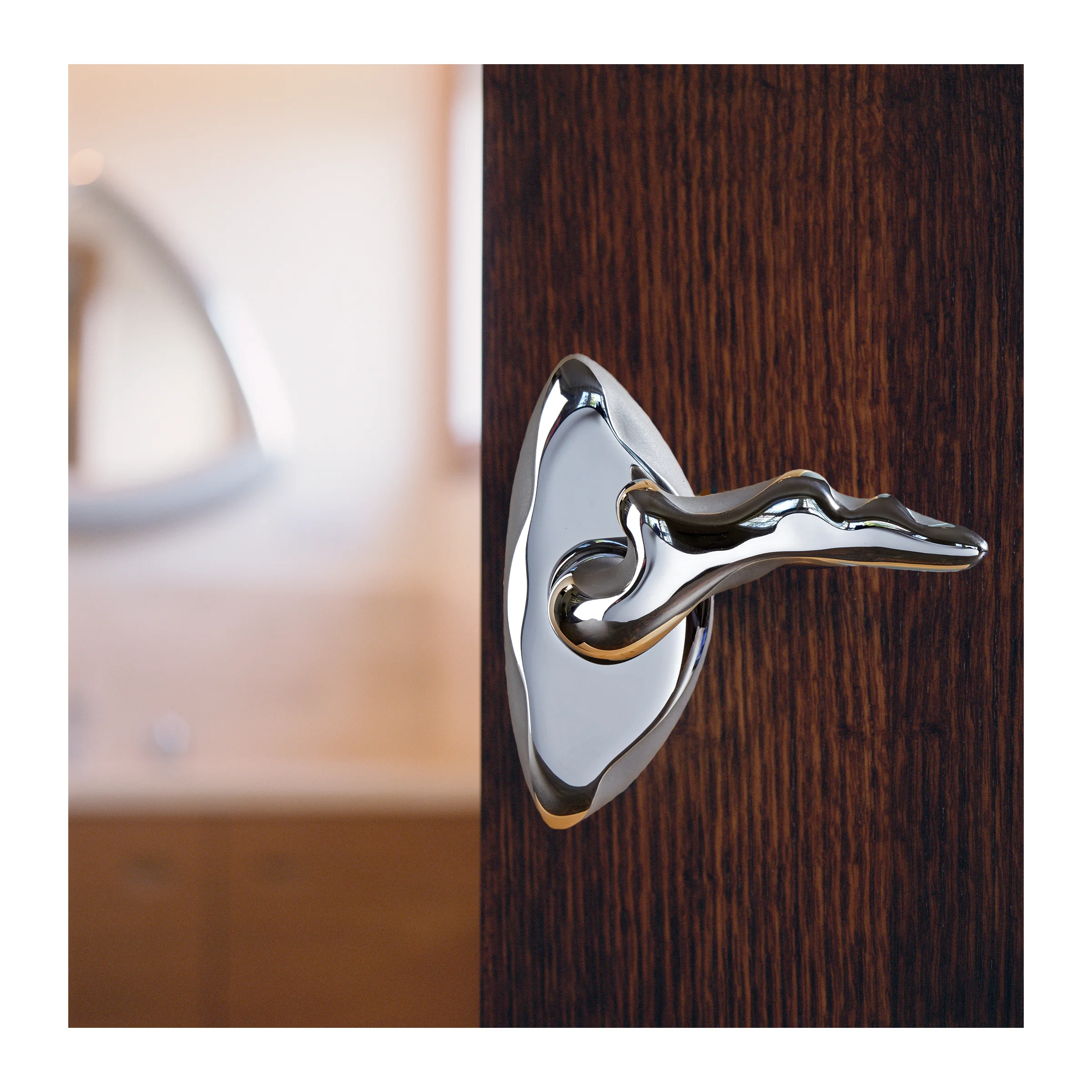Making a door handle black - patination versus powder coating
Alloys like steel and bronze can be colored by immersion in a chemical patina such as the M20 chemical from Birchwood which is suitable for bronze or by baking on a layer of pigment powder to the surface of the handle. Neither method is superior to the other, but both have different benefits.
316 Stainless steel is better suited to powder coating as this type of steel is hard, dense and corrosion resistant making it difficult for chemicals to penetrate or to form a chemical bond with. Our Morphic and Ergo collections are typically cast in 316 stainless steel an alloy that lends itself to contemporary door handle designs.
Copper is the primary metal in bronze, and it will readily react and oxidize when exposed to acidic chemicals to form a new micro thin layer. The color that develops through this conversion of copper will depend on the chemicals used and the colors can range from blue greens to red browns to black. To create black, we use M20 a product made by Birchwood Technologies and one that contains selenious acid which is the component that oxidizes the copper turning it brown or black depending on the number of applications and length of each treatment. As the depth of color can be built up over several immersions it is method well suited to a patina where you want a range of color and a more organic appearance. As the patina is micro-thin several layers can be built up and then sanded back to reveal a range of color. If a uniform effect is wanted then the handle can be immersed in a bath of this solution several times to develop an even color of the required darkness.
By comparison powder coating works well on 316 stainless steel as the pigmented layer is baked on to the surface of the piece and no penetration of the surface occurs. Powder coating offers a wider and more controllable range of color and luster with a wide range of standard colors and custom mixes available from companies like Prismatic who offer a choice of over 6,000 colors. https://www.prismaticpowders.com










